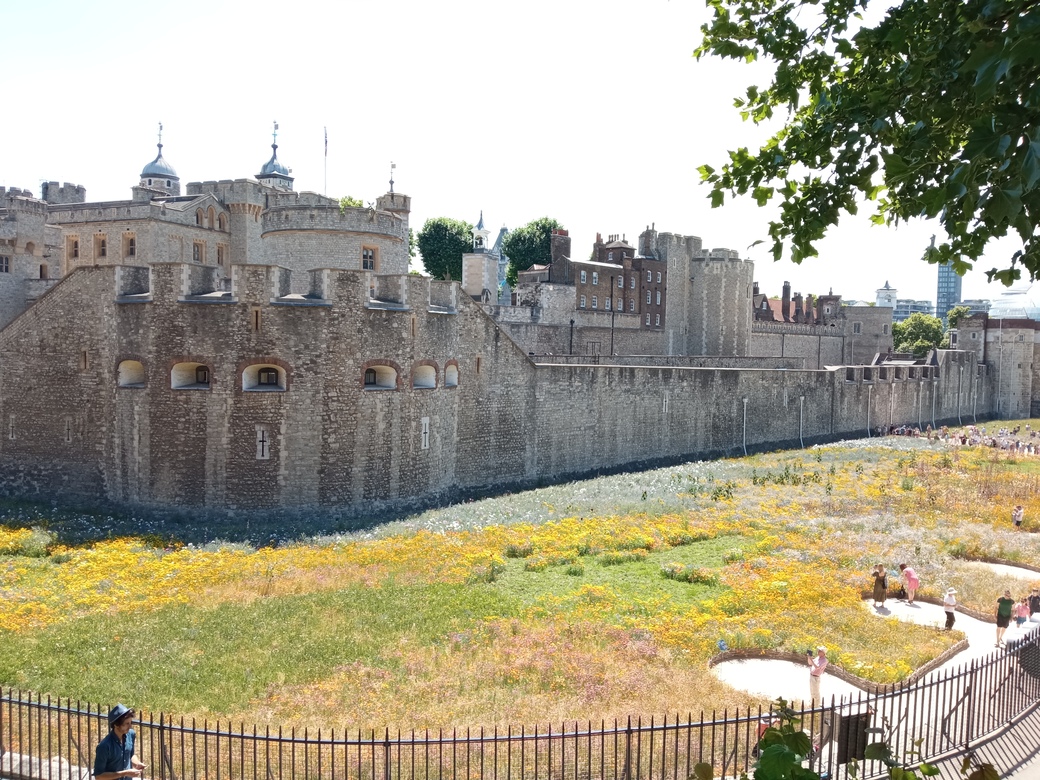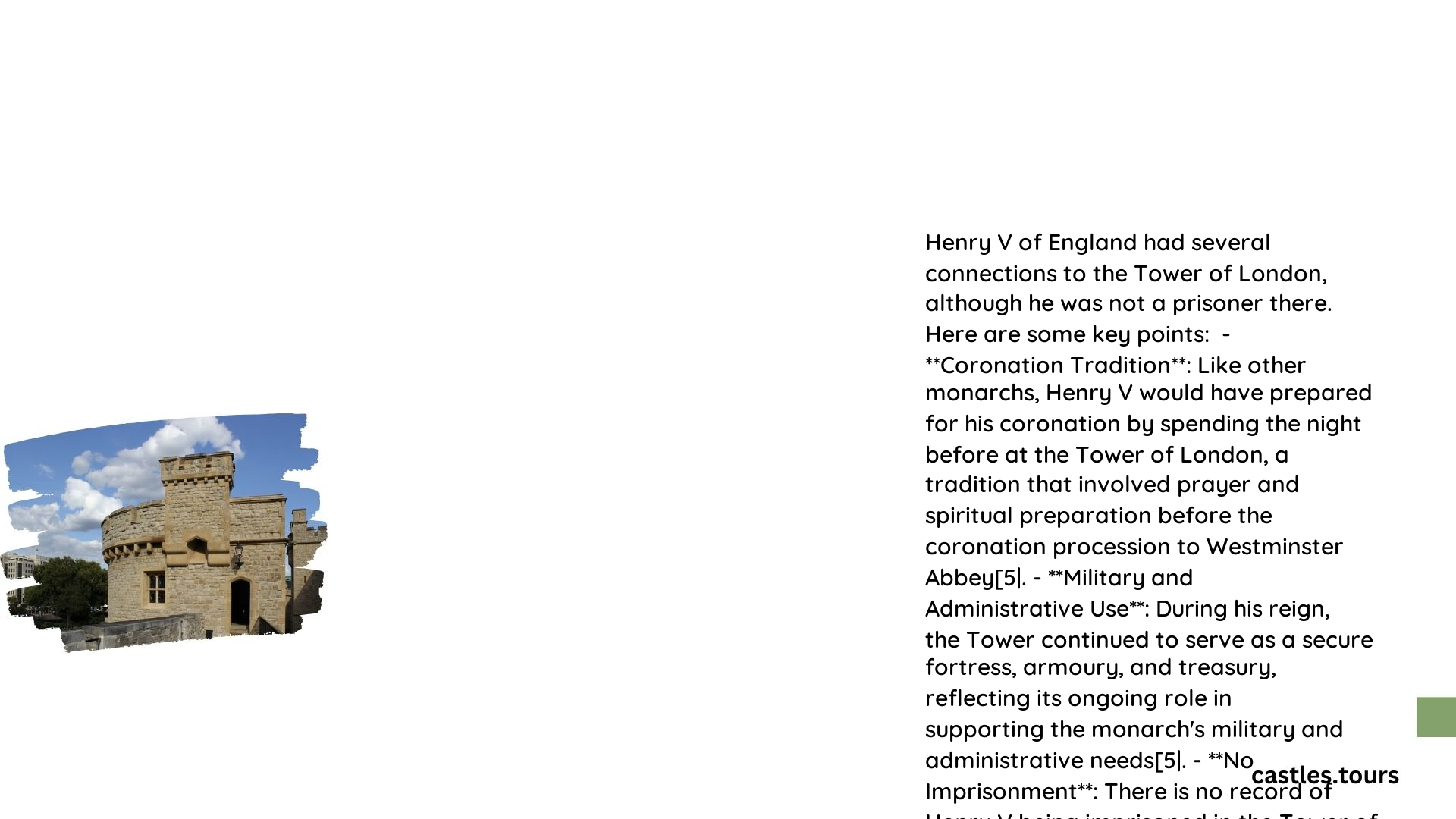The Tower of London during Henry V’s reign (1413-1422) maintained its status as a crucial fortress, palace, and prison. While no major architectural changes are directly attributed to Henry V, the Tower continued to play a significant role in royal and military affairs. This iconic structure, with its rich history dating back to William the Conqueror, remained a symbol of royal power and authority throughout Henry V’s time on the throne.
What Was the Tower of London’s Role During Henry V’s Reign?

During Henry V’s reign, the Tower of London served multiple purposes:
- Fortress: It continued to be a formidable defensive structure.
- Royal Residence: Although not the primary residence, it was used for various royal functions.
- Prison: Political enemies and threats to the crown were held here.
- Military Center: The Tower was involved in arms production and storage.
- Administrative Hub: It housed important government functions, including the Royal Mint.
How Did the Tower’s Architecture Look in Henry V’s Time?

By the early 15th century, the Tower of London had developed into a complex structure:
- White Tower: The central keep and oldest part of the fortress
- Inner Curtain Wall: First line of defense
- Outer Curtain Wall: Additional fortification
- Wakefield Tower: Part of Henry III’s expansions
- Lanthorn Tower: Another notable structure
While no significant architectural changes are recorded during Henry V’s reign, the existing structures continued to serve their purposes effectively.
What Notable Events Occurred at the Tower During Henry V’s Time?
One of the few documented events related to Henry V and the Tower of London involves John Talbot:
| Event | Description |
|---|---|
| John Talbot’s Imprisonment | Sent to the Tower over a land dispute |
This incident highlights the Tower’s ongoing role as a place of confinement for those who fell out of favor with the crown.
How Did the Tower Function as a Prison Under Henry V?
The Tower of London maintained its reputation as a formidable prison during Henry V’s reign:
- Political Prisoners: Those seen as threats to the royal dynasty were held here
- High-Profile Inmates: The Tower typically housed prisoners of noble birth or significant importance
- Interrogations: The fortress was used for questioning and extracting information from prisoners
- Executions: While not all prisoners met their end here, the Tower was known as a site of execution for traitors and enemies of the state
What Was the Tower’s Importance in Royal Ceremonies?
Despite not being the primary royal residence, the Tower played a crucial role in royal ceremonies:
- Coronation Processions: The Tower served as a starting point for coronation processions to Westminster Abbey
- Royal Regalia Storage: Crown jewels and other important royal artifacts were kept secure within the Tower
- Royal Mint: The production of coins continued at the Tower, emphasizing its economic importance
- Symbolic Power: The Tower’s imposing presence served as a constant reminder of royal authority in London
How Did the Tower Contribute to Military Affairs Under Henry V?
Henry V, known for his military campaigns, likely utilized the Tower’s military functions:
- Armory: The Tower housed a significant collection of weapons and armor
- Training Ground: The fortress grounds may have been used for military exercises
- Strategic Planning: As a secure location, the Tower could have hosted meetings for planning military campaigns
- Prisoner of War Holding: Captured enemy combatants of high rank might have been held at the Tower
What Was the Tower’s Role in London’s Urban Landscape?
The Tower of London remained a dominant feature in London’s skyline and urban fabric:
- Landmark: Its imposing structure served as a navigational point for Londoners and visitors
- Thames Barrier: The Tower’s position along the River Thames made it a crucial part of London’s river defenses
- Economic Hub: With the Royal Mint and other administrative functions, the Tower contributed to London’s economic activity
- Tourist Attraction: Even in medieval times, the Tower drew visitors curious about its history and royal connections
While Henry V’s reign didn’t see significant changes to the Tower of London, its continued use and importance during this period solidified its place in English history. The Tower stood as a testament to royal power, military might, and the complex political landscape of medieval England, roles it would continue to play long after Henry V’s time.
References:
1. https://www.hrp.org.uk/tower-of-london/history-and-stories/the-story-of-the-tower-of-london/
2. https://www.timeref.com/places/tower_of_london.htm
3. https://www.discoverbritain.com/heritage/royals/tower-of-london-history/
